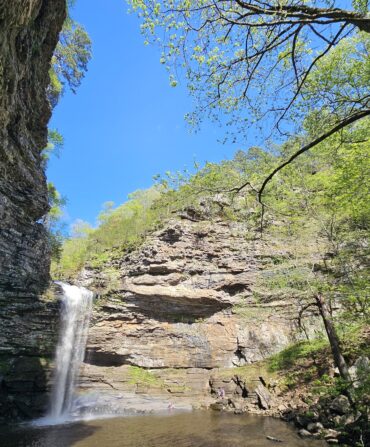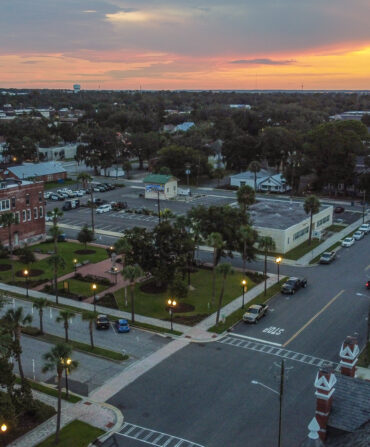A place where arid desert gives way to dramatic mountains cut by winding streams. Where temperatures can shift as much as twenty degrees in a matter of miles, or 50 degrees in a few hours. Where the remnants of 40 million-year-old volcanic eruptions form the backbone of a solitary mountain range. Unquestionably a land of extremes, West Texas’s Big Bend National Park is home to some of the most diverse environments found anywhere in the U.S.
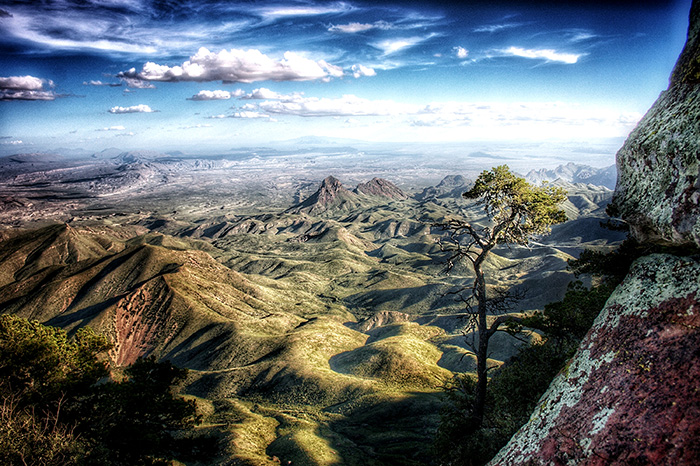
Photo: Courtesy of David Locke, Helotes
Big Bend South Rim.
Yet, despite Big Bend’s laundry list of natural attractions, few outdoor enthusiasts make the trek. In 2015, Yosemite National Park received over 4 million visitors, the Great Smoky Mountains more than 10 million, even Shenandoah National Park brought in well over 1 million. In the same year, Big Bend just attracted 380,000, which was a significant increase from years before.
The Bullock Texas State History Museum in Austin aims to correct that with their “Journey Into Big Bend,” exhibition, which opens April 22. It’s a visual and oral survey of the land, people, and cultures that make the park, with a lineup of top-shelf work from Texan photographers and audio histories from folks who know the parkland best, including a cultural history from a Mescalero Apache elder.
We caught up with four photographers whose work is featured in the exhibit, and asked them about their favorite Big Bend spots.
Sarah Wilson: “The water is the Rio Grande, the canyon is in the southwestern corner of the park and is brutally humid, completely different from the desert surrounding the area. It’s not your typical version of beauty. It’s rugged, sort of scrubby, very strange, I think that’s what I like so much about it.”
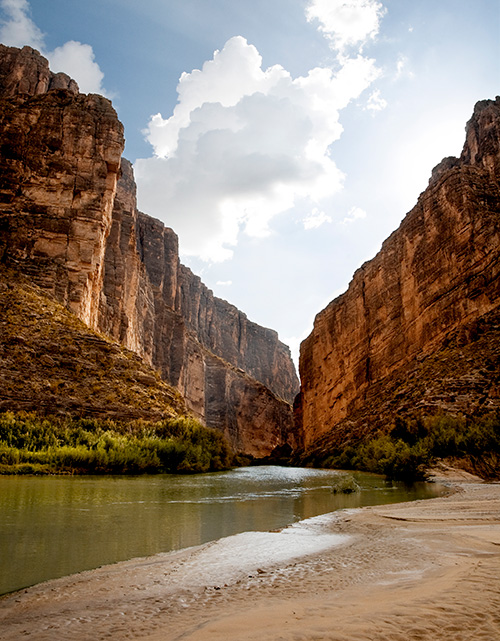
Photo: Sarah Wilson
Santa Helena Canyon.
Aaron Bates: “This area is up in the Grapevine Hills in the north-central portion of the park, it’s a fairly easy trail to get out to, only about 1-mile hike off the road, one of the more popular places to visit in the park. It’s definitely a postcard-type shot.”
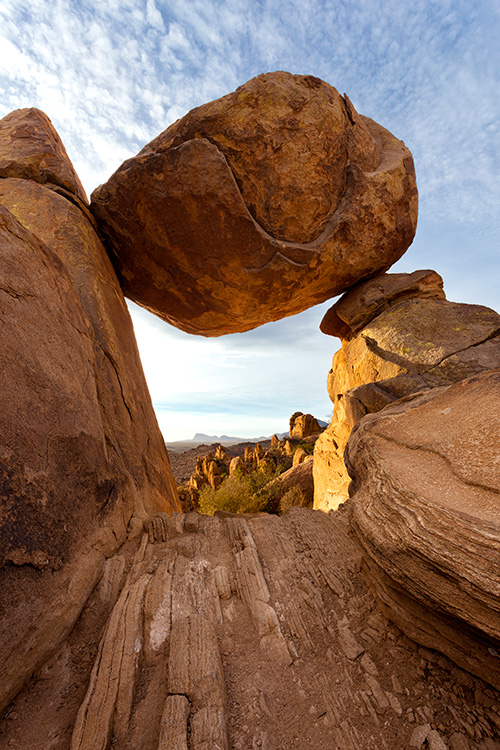
Photo: Aaron Bates
Balanced Rock.
Kathy Adams Clark: “It’s a rugged park with no swimming pools, golf courses, amusement parks, nothing like that. It’s a natural park, with camping and all of one hotel… Thanks to a lot of great work by Park Services, Big Bend is now the darkest park in the lower 48. This is the Milky Way viewed over the hotel area. Park Services has done a lot to eliminate light pollution here, so you can take a shot of the Milky Way right outside the hotel parking lot.”
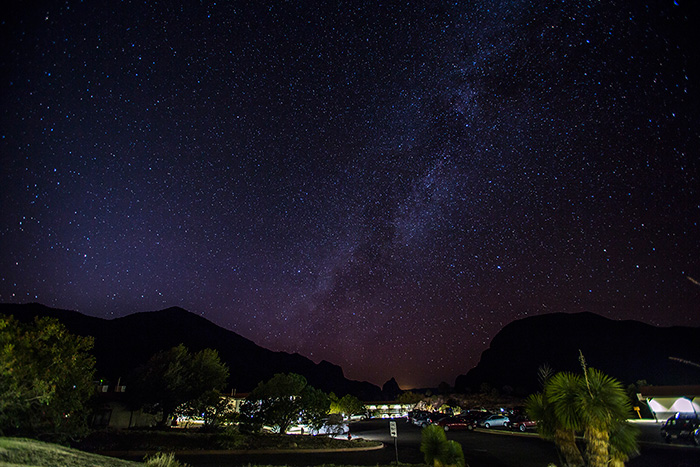
Photo: Kathy Adams Clark
Night Sky Over Big Bend.
Thomas J. Avery: “[Cerro Castellan] is a colorful mountain peak in the Southwestern part of the park. When you stand on the desert floor and look up, you’re right about 1,000 feet below it. The area around the base of it has a lot of tuff, which is a white volcanic ash, so you’re standing in this really bizarre, alien moonscape-looking area with a really colorful peak. It’s beautiful in a different way.”
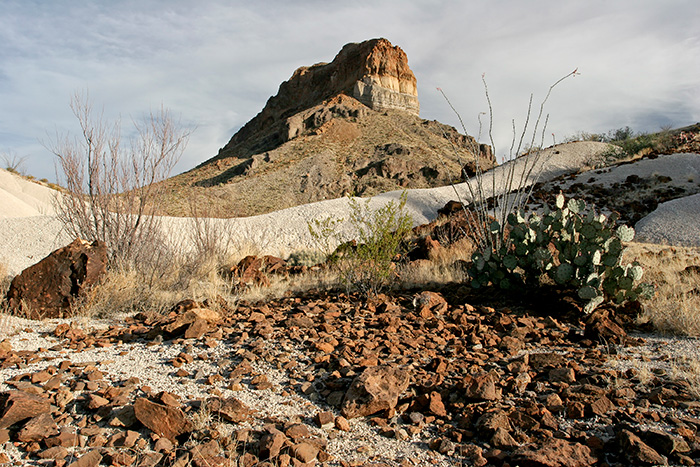
Photo: Thomas J. Avery
Cerro Castellan.
The “Journey Into Big Bend” exhibition at the Bullock Texas State History Museum in Austin, Texas opens Friday, April 22 (Happy Earth Day!), and will remain open through until September 18. Or, visit the park itself.


